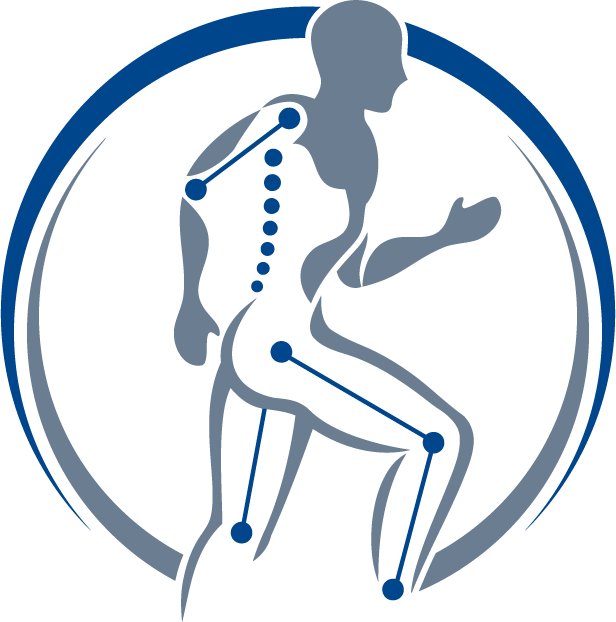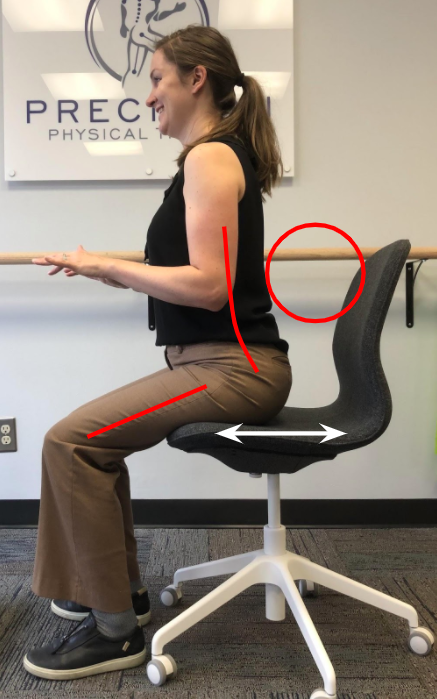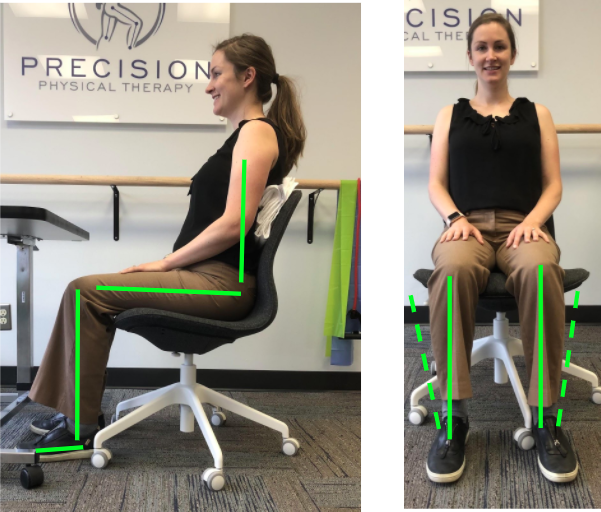How Sitting Posture Impacts Movement Health
While most of the time we focus this blog on moving with good quality during fitness class, it is also important to be sitting well. Poor sitting posture commonly leads to aches and pains that present themselves on a run, in barre class, at the gym and in managing our homes. With an increased number of people working from home - we are often helping patients navigating new work spaces and poorly fitting furniture. Now is a great time to assess your sitting posture and make improvements for joint health in the New Year. Today we will discuss a few of these sitting patterns that lead to movement pains, review why they matter, and postulate why they are happening.
Please keep in mind that good sitting posture is not one size fits all. How we sit in the chair is often dictated by the geometry of the person and the geometry of the chair. It will be nearly impossible to correct your sitting posture if your furniture is poorly fitted to you. The trick in changing posture usually has to do with understanding your body and what supports you need.
Perching on the edge of the chair
We often find ourselves in this posture when we are sitting on a chair that is too tall for us. We scoot forward so our feet reach the floor or because the chair will not scoot into the desk far enough. This posture is problematic because we use our hip flexors all day to hold ourselves into a sitting posture. Over time, this shortens the hip flexors and contributes to knee and back pain. It also changes the stress on our neck, contributing to neck pain.
What should you try instead? Find a foot stool to support your feet so that your knees are level with your hips. Then,scoot all the way to the back of the chair to use the lumbar support. Now, move you and your chair as close to your desk as possible.
Sitting on one leg or crossing the legs
We find ourselves in this posture when the chair is just slightly too tall for us. We cross our legs or sit on one leg to move pressure around because the tall chair creates pressure spots. Sitting on one leg or crossing the legs creates a twist in the knee, strains the hip joint, and causes side bending in the back. This stresses the joints and surrounding tissues and can be a cause of pain.
What should you try instead? Lower the chair or find a footstool to support your feet so that your thighs are parallel to the floor and you do not feel pressure on the back of your legs near the edge of the chair. Scoot back in your chair and allow your legs to rest out to the side. Another option is to cross at the ankle, if needed.
Slouching in the chair
Slouching in a chair often happens if it is too short for us or does not have adequate arm rests. If the arm rests are too low you may slouch to reach them - which leads to a forward head posture. If the chair is too short and our knees are above the hips, we tend to scoot our hips forward away from the back rest. This posture contributes to back pain and neck pain.
What should you try instead? Raise the height of the chair so knees are no longer higher than the hips. If that is not an option, place a dense pillow or quilt in the chair to raise the height. Make sure you can still use the backrest and scoot all the way back in the chair. Move the arm rests so they support the weight of your arm, or scoot into the desk and place the weight of your arms on the surface.
Below you can find images including normal joint alignment for sitting.
Remember, your body spends 8 hours a day sitting at your desk. Oftentimes, modifying sitting posture has a larger impact on changing aches and pains than a single exercise. Above are just three of the most common issues we see in the clinic. Each person is as unique, as is their home office set up. If you fit into one of these categories above please contact us to learn more about how we can help you adapt your current workstation to your body to resolve these postural challenges.
To your movement health in the new year,
Ann & Jesse
This blog is not intended as medical or professional advice. The information provided is for educational purposes only and is not intended to serve as medical or physical therapy advice to any individual. Any exercise has potential to cause injury or pain if it is incorrectly done or is not the right exercise for an individual’s medical or physical problems. You should consult with a physical therapist or medical provider for individualized advice.






